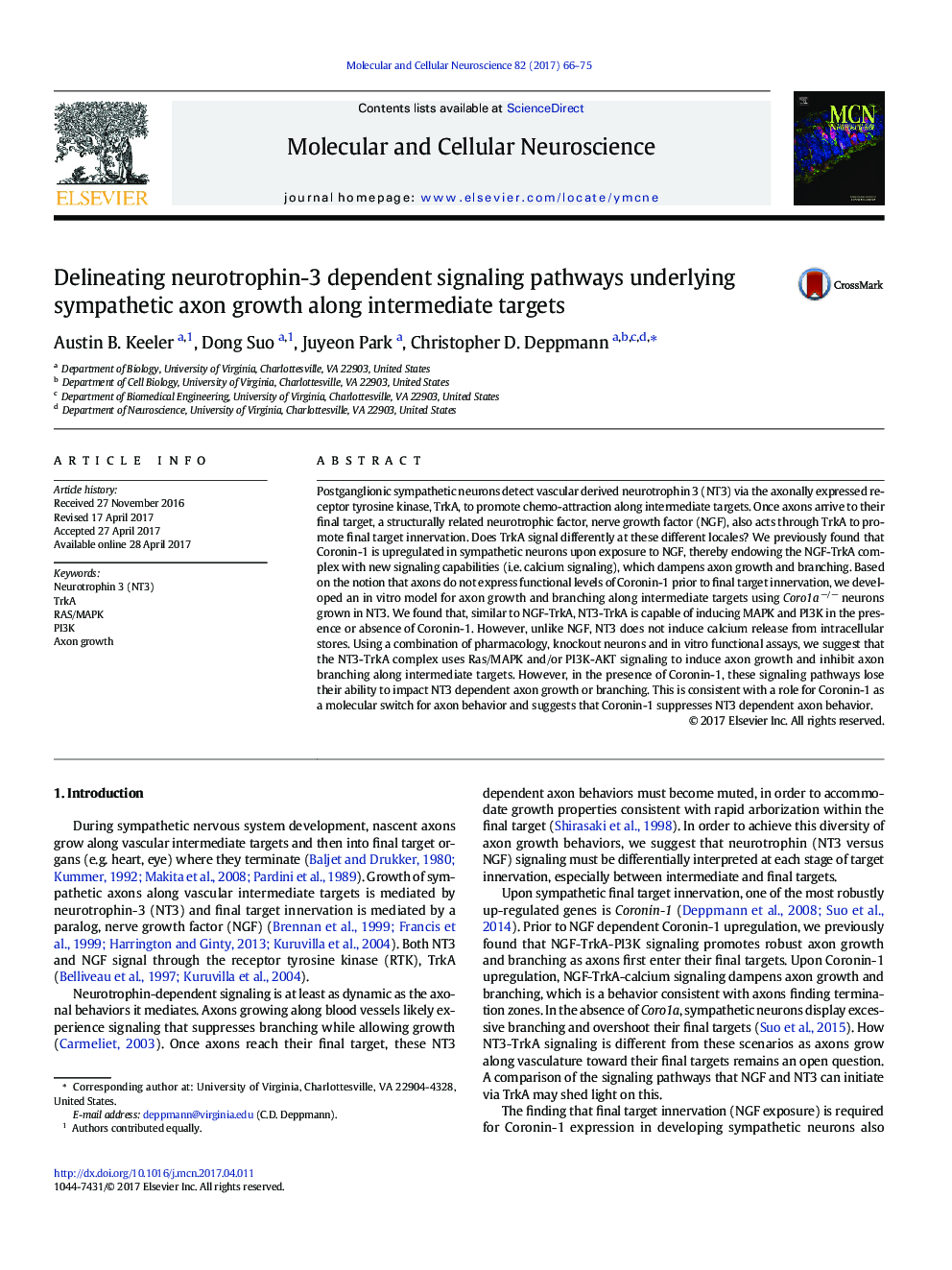| Article ID | Journal | Published Year | Pages | File Type |
|---|---|---|---|---|
| 5534346 | Molecular and Cellular Neuroscience | 2017 | 10 Pages |
â¢Coronin-1 masks the effects of NT3 dependent signaling on axon growth cone size, growth rate, and branching.â¢Neurons lacking Coronin-1 allow molecular dissection of critical pathways underlying axon growth along intermediate targets.â¢NT3 relies on activation of Ras-MAPK and PI3K (and inhibition of GSK3-beta) to promote axon growth and suppress branching.â¢Unlike NGF, NT3 is unable to induce calcium release.â¢Defines separable roles of classic TrkA dependent signaling pathways in different axon growth niches.
Postganglionic sympathetic neurons detect vascular derived neurotrophin 3 (NT3) via the axonally expressed receptor tyrosine kinase, TrkA, to promote chemo-attraction along intermediate targets. Once axons arrive to their final target, a structurally related neurotrophic factor, nerve growth factor (NGF), also acts through TrkA to promote final target innervation. Does TrkA signal differently at these different locales? We previously found that Coronin-1 is upregulated in sympathetic neurons upon exposure to NGF, thereby endowing the NGF-TrkA complex with new signaling capabilities (i.e. calcium signaling), which dampens axon growth and branching. Based on the notion that axons do not express functional levels of Coronin-1 prior to final target innervation, we developed an in vitro model for axon growth and branching along intermediate targets using Coro1aâ/â neurons grown in NT3. We found that, similar to NGF-TrkA, NT3-TrkA is capable of inducing MAPK and PI3K in the presence or absence of Coronin-1. However, unlike NGF, NT3 does not induce calcium release from intracellular stores. Using a combination of pharmacology, knockout neurons and in vitro functional assays, we suggest that the NT3-TrkA complex uses Ras/MAPK and/or PI3K-AKT signaling to induce axon growth and inhibit axon branching along intermediate targets. However, in the presence of Coronin-1, these signaling pathways lose their ability to impact NT3 dependent axon growth or branching. This is consistent with a role for Coronin-1 as a molecular switch for axon behavior and suggests that Coronin-1 suppresses NT3 dependent axon behavior.
